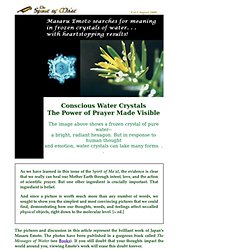

Energies. This section deals with the non-physical energies, variously called life-force, bio-energy, prana, chi, orgone energy, od and many other names.

It is this energy level that we most easily see as the innermost aura around living objects or that we sometimes feel as various sensations such as heat or tingling in our body, especially when transferring energy as with 'laying on of hands' or Reiki. It is also the energy that fuels our sexuality and that we feel most strongly during orgasm. This energy circulates in our acupuncture system and its vortices form our chakra system. It is not only at the base of most paranormal or psychic phenomena, but is also the healing agent of many natural therapies, such as homoeopathy. While it is still unknown to orthodox science, it is an everyday experience of many sensitive individuals. For an excellent site on the orgone energy research of Wilhelm Reich as well as links to other bio-energy sites see the Public Orgonomic Research Exchange (PORE) at .
Is everything energy? What is energy?

According to Wikipedia the definition is: "a scalar physical quantity, an attribute of objects and systems that is conserved in nature. In physics textbooks energy is often defined as the ability to do work or to generate heat. " "Conserved in nature" would also mean conserved in the universe. Nature is part of the universe. Is the universe then made up of different energies? In his book A Happy Pocket Full of Money David Cameron says: "Science shows us that everything is made up of energy and exchanges that with everything else at all times in a most complex way. David Lynch: Consciousness, Creativity and the Brain. Conscious Water: Power of Prayer Made Visible. The pictures and discussion in this article represent the brilliant work of Japan's Masaru Emoto.

The photos have been published in a gorgeous book called The Messages of Water (see Books). If you still doubt that your thoughts impact the world around you, viewing Emoto's work will erase this doubt forever. The first four pictures are courtesy of Rebecca at DolphinSwim, The rest were captured directly from Emoto's book. Quantum mind. The quantum mind or quantum consciousness hypothesis proposes that classical mechanics cannot explain consciousness, while quantum mechanical phenomena, such as quantum entanglement and superposition, may play an important part in the brain's function, and could form the basis of an explanation of consciousness.

It is not one theory, but a collection of distinct ideas described below. A few theoretical physicists have argued that classical physics is intrinsically incapable of explaining the holistic aspects of consciousness, whereas quantum mechanics can. The idea that quantum theory has something to do with the workings of the mind go back to Eugene Wigner, who assumed that the wave function collapses due to its interaction with consciousness.
The philosopher David Chalmers has argued against quantum consciousness. Description of main quantum mind approaches[edit] David Bohm[edit] Morphic fields, quantum interconnectedness. Elemental Mysteries: Energy, Number, and Frequency. The Perennial Tradition deals with fundamental mysteries and the most basic questions: Why is there being at all?

Why is our physical world ordered, and not governed by incoherent chaos? Why and how is this "Cosmos" (as the Greeks termed it) intelligible to humans? What is the essence of these organizing principles: number, frequency, pattern, structure, harmony, culture, and material form? 2How do these organizing principles make apperception, understanding, and intelligence possible? Mysticism and Modern Physics - Science. The reciprocal transformation of matter and energy is a major theme of both modern physics and Jewish Mysticism.

These thought-provoking parallels give us a holistic picture of ourselves as Jews participating in the greater universe. Parallels of Mysticism and Science The secularization of Western man's world viewed during the course of the 'scientific revolution' of the past three centuries has engendered a profound dichotomy between man's religious/mystical beliefs and his intellectual/scientific perspective. The dramatic discoveries in the physical sciences during this century have not as yet profoundly affected this aspect of modern man's basic weltanschauung. However, if one explores the philosophical ramifications of some of these discoveries, what emerges from this analysis is a scientific perception of the universe which has, to a great extent, converged on that of the traditional mystical viewpoint that is central to religious thought.
Ratzo V’shov Subject-Object Duality. Genuine Mysticism. Thomas J.

McFarlane Spring 2000 Edited and revised for the web March 2004 www.integralscience.org ABSTRACT: This pilot study investigates EEG correlates of successive stages of concentration meditation. The Five Senses. The Four Fundamental Forces. As of July 1, 2013 ThinkQuest has been discontinued.

We would like to thank everyone for being a part of the ThinkQuest global community: Students - For your limitless creativity and innovation, which inspires us all. Teachers - For your passion in guiding students on their quest. Partners - For your unwavering support and evangelism. Parents - For supporting the use of technology not only as an instrument of learning, but as a means of creating knowledge. We encourage everyone to continue to “Think, Create and Collaborate,” unleashing the power of technology to teach, share, and inspire. Dr jill bolte taylor. How it feels to have a stroke. Where Science and Buddhism Meet PART 1. Mindfulness with Jon Kabat-Zinn Albert Einstein on Buddhism. Frequency. Universe: Matter and Energy in the Universe.